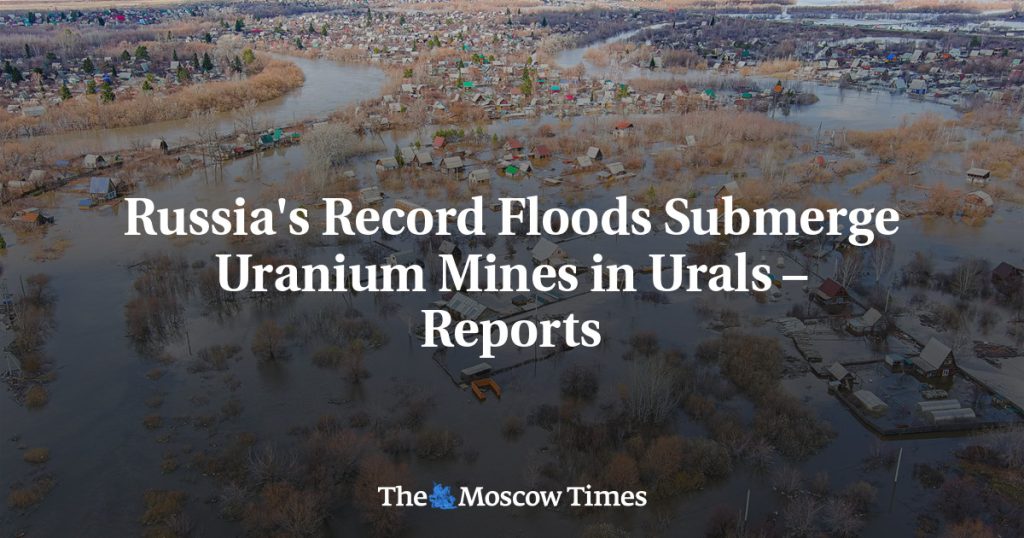The recent flooding in Russia’s Kurgan region has caused concern over the potential seepage of radioactive and chemical pollution from Soviet-era uranium mines into the Tobol River, according to an investigation by Agentstvo. The Dobrovolnoye uranium deposit, operated by a company owned by Rosatom, is located within the flood zone and contains hundreds or even thousands of mine shafts that have compromised the natural protective barrier surrounding the uranium ore. Environmentalists fear that the flooding has likely sent radioactive substances into the river, putting the hundreds of thousands of people living near the riverbanks at risk.
Local ecologists have raised alarms about the accumulation of “radioactive sludge” in the mines over the years, despite public protests against continued uranium mining in the flood-prone area. Nuclear physicist and antinuclear campaigner, Andrei Ozharovsky, who visited the area several years ago, reported that some shafts that were not properly sealed now leak a radioactive solution of uranium salts into the river. Uranium, being both radioactive and toxic, poses a threat even in small concentrations in a river used for drinking purposes. The potential risks of drinking contaminated water include uranium entering the human body, which can lead to internal radiation exposure, more dangerous than external exposure.
Rosatom, the state nuclear energy agency, has previously dismissed concerns about potential leaks and river contamination, calling protests against uranium mining at Dobrovolskoye “radiophobia combined with ignorance.” The agency claims that the deposit is isolated from the Tobol River by natural barriers. However, the recent flooding has raised new fears about the impact of uranium mining in the area on the local population and environment. The lack of transparency and accountability on the part of Rosatom has left many questions unanswered regarding the safety of the region and the potential risks of contamination as a result of the flooding.
The flooding in Kurgan has led to a heightened awareness of the environmental and health risks associated with the uranium mining operations in the region. The long-standing issues of radioactive pollution and the potential for river contamination have been brought to the forefront by the recent events, prompting concerns about the safety of the local population and the ecosystem. The failure to address these concerns by the authorities and the dismissive attitude towards public protests have only exacerbated the situation, raising questions about the effectiveness of the regulatory framework in ensuring the safety of the environment and the people living in the affected areas.
The flooding in Kurgan, which has caused the submersion of Soviet-era uranium mines in the region, highlights the urgent need for a comprehensive assessment of the potential environmental and health risks associated with the mining operations. The presence of radioactive substances in the Tobol River poses a significant threat to the local population and the ecosystem, with long-term consequences for both human health and the environment. The lack of accountability on the part of the mining company and the authorities responsible for regulating the industry has left many unanswered questions about the safety of the region and the measures needed to prevent further contamination.
The situation in Kurgan serves as a stark reminder of the importance of ensuring transparency, accountability, and proper oversight in the extractive industries to prevent environmental disasters and protect human health. The failure to address the risks posed by the uranium mining operations in the region has put the local population at risk and damaged the ecosystem, highlighting the need for stronger regulations and stricter enforcement measures to prevent such incidents in the future. The flooding in Kurgan has brought the issue of radioactive pollution and river contamination to the forefront, emphasizing the need for a more proactive approach to monitoring and mitigating the environmental impact of mining activities.


